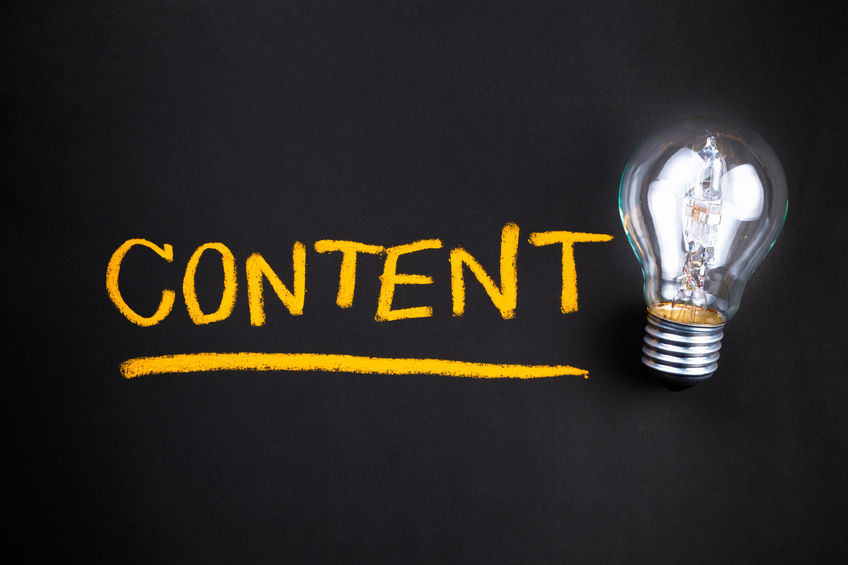
In the B2B marketplace, we all know that content is king. In fact, 91 percent of B2B marketers use content marketing to reach customers. Further, 72 percent of marketers say content increases engagement and the number of leads companies generate. Quality content showcases expertise, provides a relevant resource to prospects and clients and positions individuals and their firms as thought leaders in their field. No surprises there.
But there is debate about the ideal content length in terms of maximizing effectiveness and engagement. Is the trend to longer, deeper pieces or to the shorter, more nuts-and-bolts approach? The answer is that it depends on a variety of factors.
Content Length: Factors to Consider

When developing marketing content for the B2B marketplace, there are many variables at play. For example:
- Mobile vs. desktop. Today, buyers are mobile-savvy, which means sellers need to be ahead of the mobile game. 60 percent of B2B buyers report that mobile played a significant role in a recent purchase. That said, there is in fact a difference between preferred length of content on mobile versus desktop. Mobile users spend less time on a page and prefer to receive their content broken up into small pieces. According to some researchers, mobile users read half as many words of an article versus desktop users. Consider where and how your readers are consuming your content. A page that loads too slowly or doesn’t break down content to consumable portions can mean the difference between a lost lead and a converted one.
- SEO. 51 percent of online traffic arrives via organic search. With today’s algorithms, a search engine bot considers length of content and user engagement through link use and time spent on a page. According to most research, there seems to be a word count “sweet spot” between 1000-2000 words for SEO purposes. However, don’t let this influence your content by adding fluff over substance. While a bot may be fooled, your prospects and clients will not.
- Social media “shareability.” Many readers discover content via social media platforms. However, various platforms have different limitations or recommendations for length of content. Examples include the pre-determined character count of Twitter versus more article-driven sites such as Facebook or LinkedIn. Consider creating shortened, more “shareable” versions of longer content forms and utilize a combination of images and text to catch readers’ attention.
- Trends and algorithms. According a recent compilation of content marketing statistics, Torque Mag determined that long-form content performs best when considering SEO, links and social shares. However, this is largely influenced by search and social media algorithms that favor long content and high levels of interaction.
Three Questions to Ask

If you’re tackling a new subject and are unsure whether long-form or short-form content will work best, ask yourself these three questions to help define a plan of action:
- What’s the goal of the content? Is the purpose to explore a new, emerging trend? Do you want to provide a pinnacle resource for your clients on a facet of your expertise? Do you want to create a lighthearted and entertaining read? The purpose of your content will make a big difference in determining its length. For example, our 10-page white paper on key trends in thought leadership has a different purpose than the more lighthearted newsletter “Seven Marketing Lessons from the Pages of Dr. Seuss.” While some of the subject matter overlaps, the purpose of the former is to be an ongoing resource, while the purpose of the latter is to provide an engaging, yet relevant read for our subscribers. The length of each adjusts accordingly.
- Who is the content for? In marketing, we constantly stress the need to understand your target market and their buyer personas. The goal of content is to address needs, challenges and concerns of your audiences. It’s essential to consider who will read your content before deciding its depth. Are your readers new to the subject matter and may require foundational knowledge and jargon definitions? Are they experts looking for new research findings and insights? Or, are they potential customers who are researching your firm before making a purchase decision? Consider all these possibilities and more to help determine the length and scope of content.
- What is the competition doing? If you’re creating a piece of content, gather the facts, including reviewing what your competition is doing. Take a look at the SERP (search-engine results page) of the topic you’re investigating and consider the length of the top results. If the main hits are short blog posts, this likely means readers are looking for quick answers or narrow subjects. If the top hits are 20-page e-books, readers are looking for in-depth subject matter. Also, it’s important to consider there may be a need to fill: if all the top content looks the same, perhaps your company has something new to add to the conversation to provide a competitive edge.
Focus on Quality

Content length remains one of the great debates of content marketing due to the ever-changing nature of readers and how they prefer to consume content. The fact is your industry, subject matter, brand, storytelling voice and buyer personas will all impact the content length that works best for you. In the end, the question should not be one of quantity versus quality. Know your market, be clear about your goals and produce a variety of content in forms that appeals to every type of reader.
